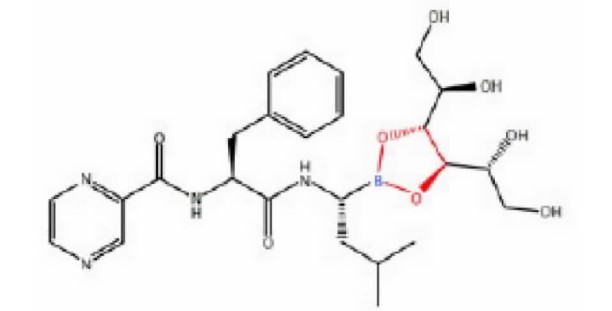“Selection of an “acceptable” lead is probably the most important governing factor in compound claim challenges, with the potential to make or break the case.”
 In an earlier article, “Tips for Selecting a ‘Lead Compound’ in Compound Claim Challenges,” I introduced an approach derived by U.S. federal courts called the “lead compound analysis,” and discussed the first stage of the analysis – “Lead Selection”. This post discusses the second stage – “Lead Development”.
In an earlier article, “Tips for Selecting a ‘Lead Compound’ in Compound Claim Challenges,” I introduced an approach derived by U.S. federal courts called the “lead compound analysis,” and discussed the first stage of the analysis – “Lead Selection”. This post discusses the second stage – “Lead Development”.
The lead development analysis involves assessment of the efforts required for modifying the lead compound to arrive at the claimed compound. As with the case of lead selection, the lead development also involves reviewing the similarities and dissimilarities between the lead and the claimed compounds. The courts have approached this inquiry broadly as the obviousness analysis under the KSR framework (KSR International Co. v. Teleflex Inc., 127 S. Ct. 1727 (2007)) and the Graham factors (Graham v. John Deere Co. of Kansas City, 383 U.S. 1 (1966)).
The inquiry involves whether the skilled artisan would have been motivated to modify the lead compound in some specific manner to arrive at the claimed compound. The required motivation (to modify the lead) can come from any source in the art, and it need not be necessarily explicit either (See Bristol Myers Squibb v. Teva). In fact, the structural closeness can itself provide the requisite motivation – the fact that the lead compound possesses “promising” and/or “useful” properties would motivate the skilled artisan to prepare further compounds which are structurally similar with better properties compared to the lead.
Riding on Structural Similarities
Compounds sharing structural closeness are expected to have similar properties (Takeda v. Alphapharm citing Dillon, 919 F.2d at 692 and In re Deuel, 51 F.3d 1552, 1558 (Fed. Cir. 1995)) thus the structural similarities between the lead and the claimed compounds shall raise a presumption of prima facie obviousness. But, again, mere structural similarity is not enough; there should be some teaching or motivation provided by the art, either in the form of combination of references or by any other means, to suggest the specific molecular modifications of the lead compound to arrive at the claimed compound(s). The skilled artisan should also be able to “reasonably” expect that such a modification would provide compounds with better or desirable properties over the known/lead compound. Stated otherwise, the art on record, with or without taking into the consideration the general understanding of the skilled artisan, should provide a reasonable expectation of success in making such modifications to the lead compound.
Difference in ‘Degree’ is not Enough: ‘Kind’ is Key
The establishment of prima facie obviousness based on structural similarities is not sufficient to render a compound claim obvious. The prima facie case can be rebutted, e.g., by a showing of some “unexpected” property of the claimed compound. However, it is also well appreciated that the properties of chemical compounds, howsoever closely related they are, would vary to some extent due to the molecular differences between them. These differences in properties may be ascertained in two broad ways – i) the difference in “degree”, and ii) the difference in “kind”. The claimed compound having more potent or stronger desirable (biological) response, less intense unwanted response or exhibiting increment/decrement to the existing/known properties are a few examples of varying “degree” or “magnitude” of properties; while the two having mutually opposite responses or a completely different set of properties may be considered as difference in “kind”.
The mere fact that the claimed compound possesses a property at variance with the lead compound is not enough to substantiate it as “unexpected”. Bristol Myers Squibb v. Teva considered the difference in “degree” of a property as insufficient to outweigh the overall obviousness associated with the “expected variance” to it because of the structural differences.
The claimed compound may, actually, possess some unexpected property, but the same may also not be sufficient to overcome the obviousness. Presence of an [a]dditional unexpected property does not by itself rebut the obviousness. Different compounds are expected to exhibit some degree of difference in their properties, but as long as the compound possesses the (other) expected property or properties, it may be sufficient to support the obviousness (Bristol Myers Squibb v. Teva citing Dillon, 919 F.2d at 693, 697). Structural similarities coupled with similarities in the properties would weigh strongly in favour of obviousness of the claimed compound over the lead. In fact, the claimed compound exhibiting similar “kind” of properties, irrespective of the difference in “degrees” thereof, may be sufficient to support the obviousness by providing the necessary motivation and the reasonable expectation of success to the skilled artisan.
Steps for Success
There are at least seven decisions from the U.S. Court of Appeals for the Federal Circuit involving adjudication of compound claim challenges. In cases relating to Pioglitazone (Takeda v. Alphapharm 2006-1329, Fed. Cir. 2007); Aripiprazole (Otsuka v. Sandoz 2011-1126, Fed. Cir. 2012); and Lacosamide (UCB v. Accord 2016-2610, Fed. Cir. 2018, and Mylan v. Research Corporation 2017-2088, Fed. Cir. 2019) the challenges failed at the lead selection stage; while in Rabeprazole case (Eisai v. Dr Reddy’s 2007-1397, Fed. Cir. 2008), the challenge failed at the lead optimization stage. In the case of Pantoprazole (Altana v. Teva 2008-1039, Fed. Cir. 2009), the lead selection & optimization were found prima facie acceptable at the pre-trial pleadings stage; and finally in the Entecavir case (Bristol-Myers Squibb v. Teva 2013-1306, Fed. Cir. 2014) the defendants were successful in invalidating the compound claim through a persuasive two-stage lead compound analysis.
Selection of an “acceptable” lead is probably the most important governing factor in compound claim challenges, with the potential to make or break the case. Selection (or, rather, availability) of an appropriate lead gets the job more than half done. For the lead development analysis, the structural similarity may be necessary, but not sufficient to establish obviousness. The art should supply “some” reason that would have led a skilled artisan to modify the lead in a particular manner to arrive at the claimed compound. Some of the factors to be considered relevant for the overall lead development analysis are included in the following non-exhaustive but helpful list:
- the specific modifications needed on the lead to arrive at the claimed compound;
- how much “routine” are the required modification steps in the field of the invention on the critical date;
- the effect of those modifications on properties of the lead (or similar compounds) known, if any, in the art;
- the amount of “trial-and-error” that would have been required in doing so;
- whether the amount of required experimentation was “undue” in the field of the invention on the critical date; and
- the overall “un-/predictability” involved in the process;
An unexpected property may traverse the prima facie obviousness, but a difference in “kind” rather than the difference in “degree” of the property would be required for it to be persuasive.
A ‘reasonable’ expectation of success is needed to be established based on the overall facts on record, and the objective indicia or the secondary considerations of non-obviousness should also be weighed while deciding the overall patentability of chemical compounds in the same manner as other type of invention claims.

![[IPWatchdog Logo]](https://ipwatchdog.com/wp-content/themes/IPWatchdog%20-%202023/assets/images/temp/logo-small@2x.png)

![[Advertisement]](https://ipwatchdog.com/wp-content/uploads/2024/04/UnitedLex-May-2-2024-sidebar-700x500-1.jpg)
![[Advertisement]](https://ipwatchdog.com/wp-content/uploads/2024/04/Artificial-Intelligence-2024-REPLAY-sidebar-700x500-corrected.jpg)
![[Advertisement]](https://ipwatchdog.com/wp-content/uploads/2024/04/Patent-Litigation-Masters-2024-sidebar-700x500-1.jpg)

![[Advertisement]](https://ipwatchdog.com/wp-content/uploads/2021/12/WEBINAR-336-x-280-px.png)
![[Advertisement]](https://ipwatchdog.com/wp-content/uploads/2021/12/2021-Patent-Practice-on-Demand-recorded-Feb-2021-336-x-280.jpg)
![[Advertisement]](https://ipwatchdog.com/wp-content/uploads/2021/12/Ad-4-The-Invent-Patent-System™.png)






Join the Discussion
2 comments so far.
Paul Cole
September 29, 2020 11:24 amI was driving around the Ring of Kerry late one summer evening and asked one of the locals the best way to get back to Dublin.
“Well sir!” he said “I definitely wouldn’t start from here.”
A memorable thought for all of arguing ion support of inventive step.
Jeff Vockrodt
September 26, 2020 10:52 pmNice summary of the lead compound analysis, which is critical to understanding pharmaceutical patentability in the US in recent years.